Ukulele For Dummies (30 page)
Read Ukulele For Dummies Online
Authors: Alistair Wood

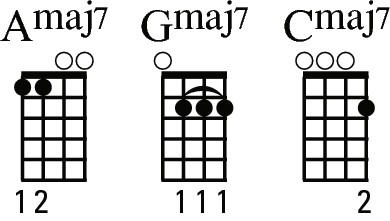
Getting cool with diminished chords
The diminished (shortened to dim) chord is rarely used in pop music because it's very dissonant (a fancy way of saying it doesn't sound nice). However, it does crop up regularly in jazzy tunes, such as the jazz turnaround (Figure 14-4) as used in â12th Street Rag' (Figure 14-9), which are popular on the uke.
In the C family of chords, the B (VII) is diminished, as shown in Figure 6-29.
Figure 6-29:
B diminished chord diagram.
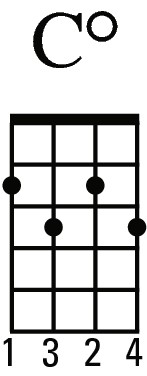
A unique feature of the diminished chord is that it can be named after any note it contains. So the chord in Figure 6-29 can be referred to as Bdim, A dim, Ddim or Fdim.
dim, Ddim or Fdim.
Remaining unresolved with suspended chords
Two types of suspended chords (shortened to
sus
) exist: sus2 and sus4. Both have a similarly ambiguous sound to them, because in a suspended chord the note that makes a chord major or minor is removed. Suspended chords are particular favourites of bands like The Who and the Rolling Stones and are used in the rocky Figure 15-1.
Figure 6-30 shows the Csus4, Asus4 and Gsus4 shapes and Figure 6-31 contains the shapes for Dsus2, Gsus2 and Fsus2. (Note that Dsus2 and Asus4 are the same shape, as are Csus4 and Fsus2.)
Figure 6-30:
Csus4, Asus4 and Gsus4 chord diagrams.
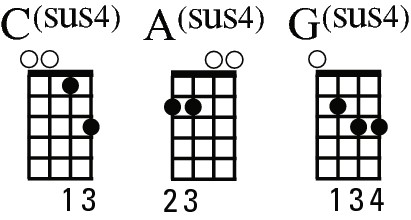
Figure 6-31:
Dsus2, Gsus2 and Fsus2 chord diagrams.
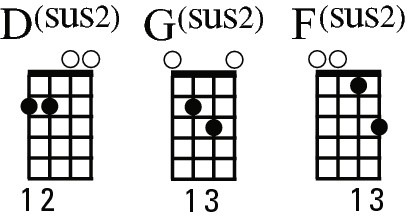
Part III
Picking and Single-Note Playing
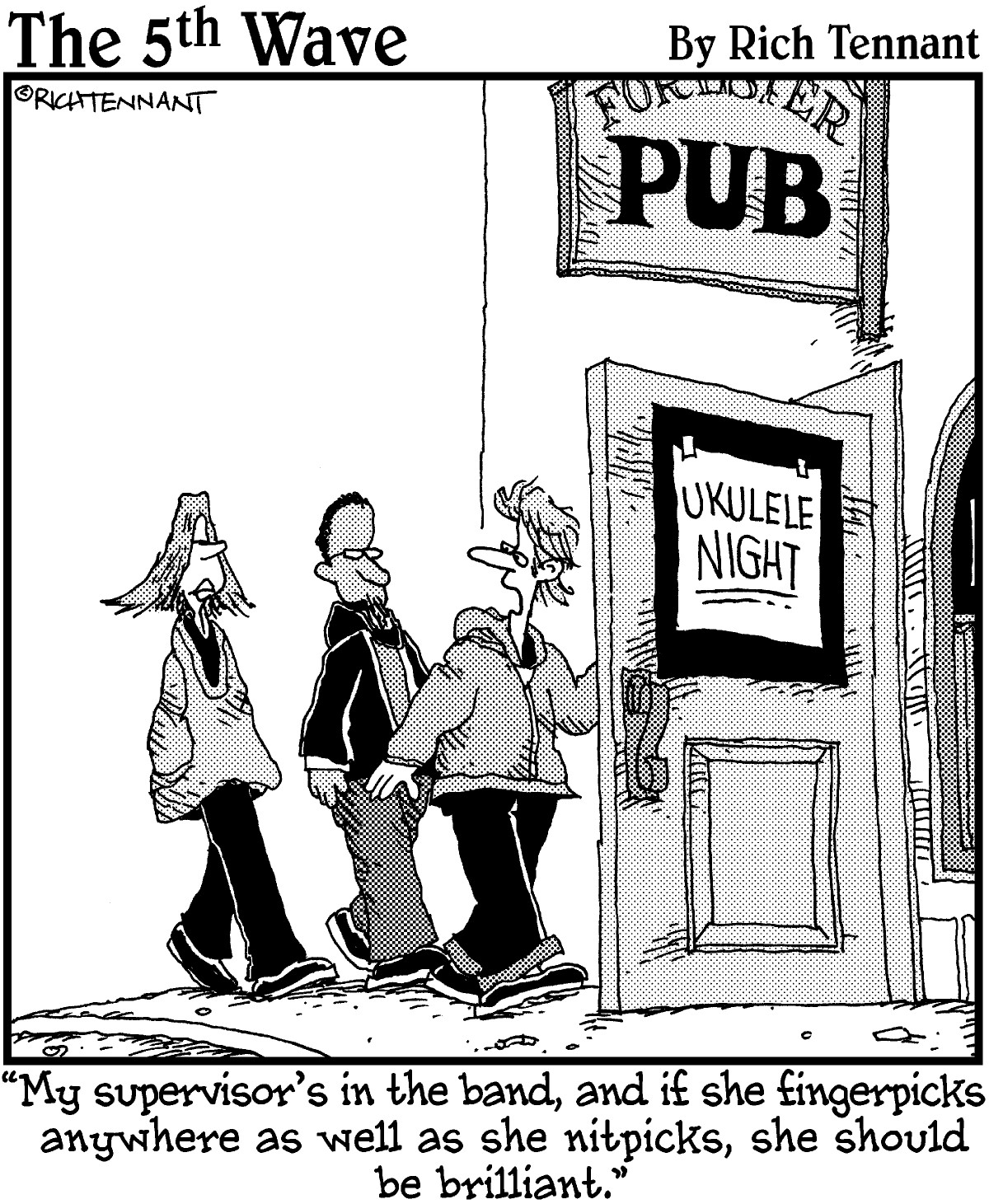
In this part . . .
Put your performing hat on because I prepare you for stepping to the front of the stage to take on some single-note playing! I show you some great fingerpicking accompaniment patterns and soloing techniques, as well as how to play melodies, all presented in easy-to-use ukulele tab.
Chapter 7
Getting to Grips with Tabs and Notation
In This Chapter
 Discovering how to read tablature
Discovering how to read tablature
 Finding rhythms
Finding rhythms
 Playing nothing and playing again
Playing nothing and playing again
 Getting it all together
Getting it all together
I
n order to perform other people's songs and tunes, you need to be able to read what the composer wants you to play. Of the two ways for writing down musical pieces â tablature and standard notation â the first is the easier but more basic method. In this chapter, I use a mixture of tablature and standard notation in order to be as clear as possible.
Tapping into Tabs
In this book the melody lines of the songs are represented with dots and lines, as Figure 7-1 shows. This method of presentation is known as
standard notation
. The notes are indicated by the height of the dots on the
stave
(the five horizontal lines).
Figure 7-1:
An example of standard notation.

Standard notation is useful because it's universal and remains the same for every instrument, but it does have some disadvantages: notation is quite tricky to read and for instruments where the same note can be played on different strings â such as the ukulele â it leaves out valuable information.
Tablature
(or
tab
) was developed to overcome these problems. Tab is designed specifically for fretted instruments, and it shows â among other details â which string to play and which fret to use. See the example in Figure 7-2.
Figure 7-2:
An example of tablature.

Stringing notes along in tabs
In tablature, each of the horizontal lines represents a string on the ukulele; however, they're upside down from what you may expect:
 The top line of the tab is the A-string (the one that's closest to the floor when you're playing).
The top line of the tab is the A-string (the one that's closest to the floor when you're playing).
 The line below that is the E-string.
The line below that is the E-string.
 The line below that is the C-string.
The line below that is the C-string.
 The bottom line of the tab is g-string.
The bottom line of the tab is g-string.
 This arrangement takes a little getting used to. To help, think of tab as being from the perspective of the ukulele flipped up towards your head. Figure 7-3 shows how the strings on your uke tie up with tab.
This arrangement takes a little getting used to. To help, think of tab as being from the perspective of the ukulele flipped up towards your head. Figure 7-3 shows how the strings on your uke tie up with tab.
Figure 7-3:
How tabs refer to the strings.

